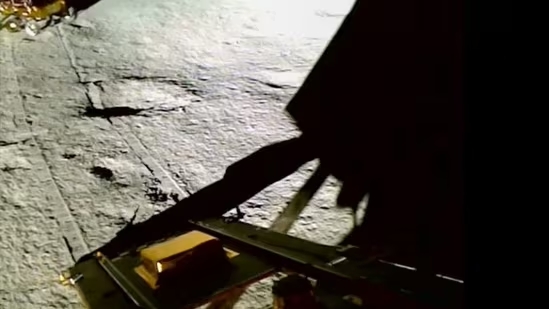Chandrayaan-3’s Finding About Moon’s Soil Temperature Released; What’s Next?

New Delhi: Four days after the historic soft landing of Chandrayaan-3 on the south polar region of Moon, Indian Space Research Organisation (ISRO) on Sunday shared the first observations of its spacecraft.
For the first time in global space science, lunar soil around Moon’s south pole, its temperature variation till 10 cm beneath the surface have been profiled.
ISRO shared a graph on the variation of Moon’s soil temperature at various depths.
“ChaSTE (Chandra’s Surface Thermophysical Experiment) measures the temperature profile of the lunar topsoil around the pole, to understand the thermal behaviour of the moon’s surface. It has a temperature probe equipped with a controlled penetration mechanism capable of reaching a depth of 10 cm beneath the surface. The probe is fitted with 10 individual temperature sensors,” ISRO said.
“The presented graph illustrates the temperature variations of the lunar surface/near-surface at various depths, as recorded during the probe’s penetration. This is the first such profile for the lunar south pole. Detailed observations are underway,” ISRO added on social media platform X.
Temperatures have been shown to be ranging from -10 degree to 60 degree celsius.
Chandrayaan-3 Mission:
Here are the first observations from the ChaSTE payload onboard Vikram Lander.ChaSTE (Chandra’s Surface Thermophysical Experiment) measures the temperature profile of the lunar topsoil around the pole, to understand the thermal behaviour of the moon’s… pic.twitter.com/VZ1cjWHTnd
— ISRO (@isro) August 27, 2023
Chandrayaan 3 has seven payloads — four on Vikram lander, two on Pragyan rover and one propulsion module payload – which will carry out different scientific experiments.
According to Union Minister of State for Space Dr Jitendra Singh, the main focus of the payloads is to provide an integrated assessment of the lunar surface features, including the thermal properties and surface elements of the lunar topsoil (regolith) as well as the plasma environment near the surface. It will also assess the lunar seismic activities and the impact of meteors on the lunar surface.
“All these are essential for the fundamental understanding of the lunar near-surface environment and for making future lunar habitat developments for explorations,” Dr Singh was quoted as saying by Department of Space.
Vikram lander is carrying Instrument for Lunar Seismic Activity (ILSA), ChaSTE, Langmuir Probe (RAMBHA-LP) and a laser retroreflector array payloads, while Pragyan rover has Alpha Particle X-ray Spectrometer (APXS) and Laser Induced Breakdown Spectroscope (LIBS) payloads.
“All these payloads are planned for continuous operations from 24th August 2023 till end of the mission,” informed Dr Singh, who is also Union Minister of State (Independent Charge) Science & Technology; MoS PMO, Personnel, Public Grievances, Pensions, and Atomic Energy.
ILSA will make continuous observations of the lunar seismic activities as well as the meteors impacting lunar surface.
“These measurements will help us plan for future habitat developments by understanding the frequency of potential hazards from meteor impacts and seismic activities,” said Dr Singh.
ChaSTE is mounted with 10 high-precision Thermal Sensors, which will dig into the moon’s top soil to study temperature variations, explained the minister.
“The low density and high thermal insulation of the regolith enhances its potential as a basic building block for future habitats while the assessment of the wide range of temperature variations are crucial for survivability,” Dr Singh elaborated.
Study of Moon’s near-surface plasma and its time variations will be carried out by the Langmuir probe. RAMBHA-LP is the first-ever in-situ observation of the near-surface plasma and its diurnal variation in higher lunar latitude, where the Sun elevation angle is less, said Dr Singh.
“These will help assess the lunar surface charging for future manned missions,” he said.
Alpha Particle X-ray Spectrometer (APXS) and Laser Induced Breakdown Spectroscopy (LIBS), which are mounted on Pragyan rover, will make the measurements of lunar surface elements at the stop-points (once in about 4.5 hours) along Rover track.
“These measurements can make inference on the potential surface elemental compositions which will be helpful for future self-sustaining habitat developments,” the minister said.
Chandrayaan-3 is also carrying Spectropolarimetry of Habitable Planet Earth (SHAPE) onboard the Propulsion orbit of the Moon.
“It will help identify earth-like exoplanets in future. The data will be made available to the students and general public after the initial analysis and consolidations,” stated Dr Singh.

Comments are closed.